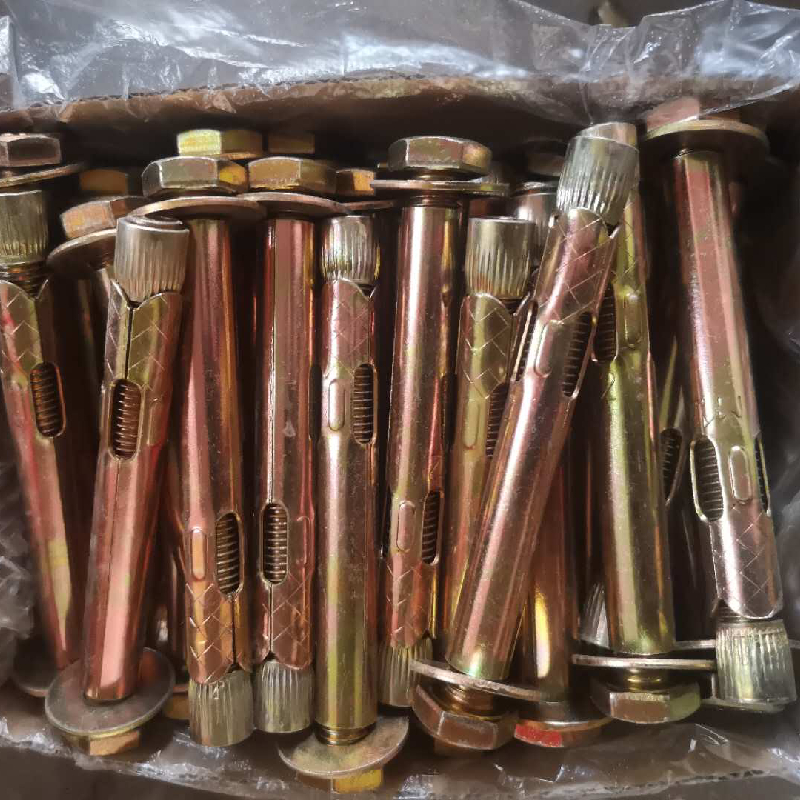Nov . 17, 2024 00:40 Back to list
expansion anchor for steel
Understanding Expansion Anchors for Steel A Comprehensive Guide
In the world of construction and engineering, the choice of anchors plays a pivotal role in ensuring the stability and safety of structures. Among various anchoring systems, expansion anchors are particularly popular for their reliability and strength, especially when used with steel. This article provides an in-depth look at expansion anchors for steel, covering their types, applications, advantages, and installation processes.
What are Expansion Anchors?
Expansion anchors, also known as expansion bolts, are fasteners that are designed to secure objects to masonry or concrete surfaces. They operate on the principle of expansion, which means that they increase in size or volume when a force is applied, thereby gripping the material they are embedded in. This is achieved through a mechanism that causes the anchor to expand as the bolt is tightened.
Types of Expansion Anchors for Steel
There are several types of expansion anchors suitable for steel applications, each with unique characteristics
1. Wedge Anchors These are the most commonly used expansion anchors. They consist of a threaded rod with a conical end that expands against the sides of the hole when tightened. Wedge anchors are ideal for heavy loads and can be used in both cracked and uncracked concrete.
2. Sleeve Anchors Made of a hollow sleeve, sleeve anchors expand as the bolt is tightened. They are versatile and can be used in a variety of materials, making them suitable for securing lighter loads in medium-strength concrete.
3. Drop-In Anchors These anchors are designed for use in pre-drilled holes. They feature a cylindrical design and expand when a setting tool is used. Drop-in anchors are perfect for applications where a flush finish is required, such as in ceilings or walls.
4. Concrete Screws Although not traditionally classified as expansion anchors, concrete screws do provide a similar function. They are designed to be directly screwed into the concrete and offer quick and easy installation, making them a popular choice for lighter applications.
Applications of Expansion Anchors
Expansion anchors are utilized in various applications, particularly when it comes to the attachment of steel components
. Some common uses include- Structural Steel Connections In construction, expansion anchors are crucial for connecting steel beams to concrete foundations or walls. - Precast Concrete Panels They are used to attach precast elements securely to the concrete or steel framework. - Handrails and Safety Barriers When installing handrails or safety barriers, expansion anchors provide a secure and reliable anchoring solution. - Machinery and Equipment Expansion anchors are often employed to secure heavy machinery to concrete pads, ensuring stability during operation.
expansion anchor for steel

Advantages of Expansion Anchors
The advantages of using expansion anchors for steel applications are numerous
- High Load Capacities Expansion anchors offer high strength and can handle significant load capacities, making them suitable for demanding applications. - Versatility These anchors can be used in various substrates, including concrete, brick, and block, making them a go-to choice for many construction projects. - Ease of Installation Most expansion anchors can be installed using basic tools, reducing labor costs and time on the job site. - Corrosion Resistance Many expansion anchors are made from galvanized or stainless steel, providing superior resistance to corrosion and extending their lifespan.
Installation Process
The installation of expansion anchors involves several key steps
1. Selecting the Right Anchor It's essential to choose an anchor that is compatible with the load requirements and the substrate material.
2. Drilling a Hole A hole should be drilled into the concrete or masonry surface using a hammer drill, ensuring it matches the diameter and depth specifications of the chosen anchor.
3. Inserting the Anchor The anchor is then inserted into the hole until it is flush with the surface.
4. Tightening the Bolt Using a wrench, the bolt is tightened, causing the anchor to expand and secure itself within the material.
5. Testing Stability Finally, it’s vital to test the stability of the anchor to ensure it can handle the intended load safely.
Conclusion
Expansion anchors for steel applications represent a critical component of construction and engineering. Their design, versatility, and strength make them suitable for a wide range of applications. Understanding the types, advantages, and installation methods of these anchors can significantly contribute to the safety and reliability of structural projects. As construction techniques evolve, the continued use and innovation of expansion anchors will remain a cornerstone of robust engineering practices.


